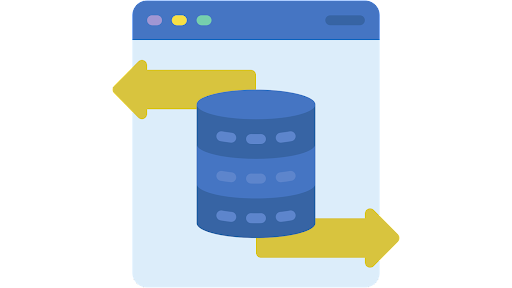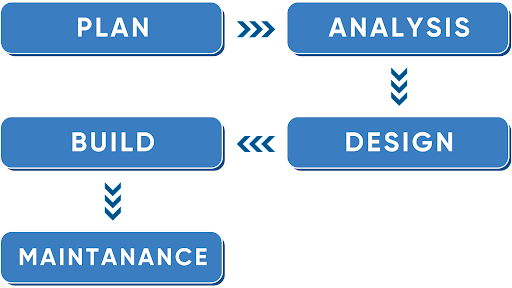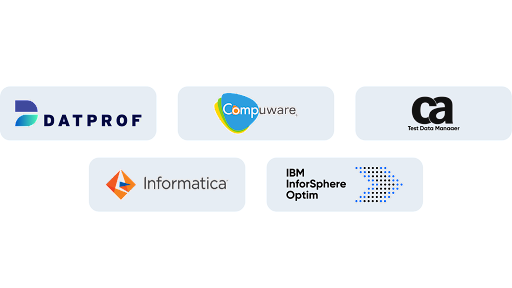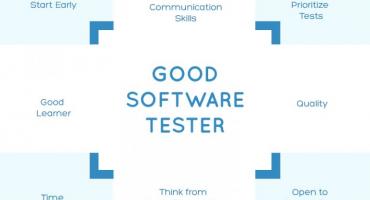A Quick Guide on Everything to Know About Test Data Management

Do you think test data management is not that vital to your software development company? Well, you might want to think again!

Consider this.
Business operations are making headway fast, especially with technology powering everything —which means that software development teams need to move faster. As agile development processes and DevOps methodologies slowly came into the picture, it was a blessing! Companies were better equipped to keep up with an increasingly competitive pace, respond to events promptly, and enhance collaboration among cross-functional teams.
However, here also lies the catch!
To benefit massively from these technologies, software development companies need efficient and effective testing strategies, along with processes that are in control of test data. Even so, many testing, development, and QA teams fail to create and maintain the required test data because IT experts do not always have the skills to test data preparation and data usage. They may also not be aware of how to use test data in the best way possible.
However, today, companies are sitting up and taking notice of this setback and making test data management an integral part of the quality assurance of software. This is especially true since test data management is expected to grow 12.7% CAGR by 2022.
So you see how companies are only just witnessing why test data is an absolute game-changer? If you’re still new to the concept of test data management and test data management tools, don’t worry! That’s where we step in.
In this blog, you will learn:
- What is test data management?
- Why is test data management important? Is it a necessity?
- How to implement test data management?
- Common kinds of test data
- Best practices to better your test data management
- Top test data management tools to use
So, let’s get started!
What is test data management?

Testing is one of the most vital processes in software development and if you have tests, you require test data. While you conduct the process of testing, via the effective help and guidance of an expert and experienced UAT tester and QA team of professionals, you have access to the best kind of data that exists — real data! But, testing before production is just as important as testing in production. This is where test data management comes to the rescue!
- Test data management is also known as TDM and is a function that generates, manages, and delivers test data to application teams while maintaining data privacy.
- It involves creating nonproduction data sets that meet the quality requirements of software quality-testing
- Previously, application teams have created data for development and testing in an unstructured, siloed manner.
- The process ensures test data is available and makes certain test cases have access to the right formats and amounts of data.
Why is test data management important? Is it a necessity?

During the testing stage, product defects are recognized, tracked, reported, fixed, and retested so that the final product is on par with quality standards. Having proper test data management is imperative as:
- Quality of software is tested and errors are spotted: Not addressing and fixing defects costs more and increases in every stage of the software development life cycle.
- Products move quickly from conception to their release: With effective test data management that comes with automated testing, processes move forward seamlessly and smoothly which minimizes a product’s time to market.
- Reduces having too many copies of test data: Test data management makes it easy to manage test data as it reduces the intricacies involved in data management so businesses don’t have to store too many copies of test data.
How to know data is used wisely as test data?
To make sure data is going to be used effectively as test data, it needs to stand true to specific criteria.

What are the qualities that the TDM process has to abide by?
- Accessible: Test data has to be accessible. Whether it is because of authentication problems or any other issue, what is the use of having the best test data if it is not available to you?
- Realistic: Data sets have to replicate what real production data looks like the most. After all, only this kind of data looks and feels like real data in terms of formats, quantity, and more.
- Timely: Test data has to be available and accessible promptly which means, it has to be available when you need it, without any hold-ups or waiting period
- Compliant: Certain methods such as production cloning, for instance, rely on production data to obtain test data. Companies need to be mindful so that privacy regulations are maintained such as GRDP.
- Quality: If you give your test cases poor quality data, you will only get below-average results. When it comes to quality, the data needs to adhere to all of its expectations. This is where our skilled and proficient quality assurance team comes to the rescue. For instance, sometimes, you need invalid data when the test requires valid data. During negative testing also, tests are performed to see how the system reacts to invalid input.
How to implement test data management?
Implementing a test data management strategy involves:

- Planning: The UAT tester or testing team strategizes on the list of tests, checks the data requirements of every test, and keeps the required documentation ready.
- Analysis: The QA team gathers and consolidates data requirements and accordingly comes to a decision on access, data backup, and storage.
- Design: The QA team then designs the test data management strategy for data preparation where they can either create synthetic data or duplicate/subset production databases for testing requirements.
- Build: At this stage, businesses set into motion planned strategies. If required, data masking and data backup is carried out.
- Maintenance: This stage is all about troubleshooting and fixing issues to maintain the success of test data management. It also includes responding to test data requests such as updates and data additions.
Common kinds of test data
There is no common technology that caters to all test data management needs so teams need to put together a unified solution that includes all data types. In this way, a wide range of testing needs is met.
Production data
- Offers complete test coverage but it comes at a price of storage and agility cost.
- It also involves exposing sensitive data for some applications
Subsets of production data
- Compared to full copies, this kind of data is more agile.
- Is cost-effective when it comes to CPU, hardware, and licensing costs
- Tedious to obtain sufficient test coverage
Masked production data
- The QA team use real data without bringing in unsafe levels of risk
- Can prolong environment provisioning
- Needs staging environments with extra storage and staff so referential integrity after data is transformed
Synthetic data
- Avoids security issues but space savings are restricted
- If performed manually, creating test data is also subject to human error
- Needs a detailed understanding of data relationships
Best practices to better your test data management

When conducting quality assurance of software as well as getting the best software quality assurance services and looking for the best practices for your TDM strategy, consider the following:
Data delivery
- Shorten the gap of time taken to deliver test data to a tester or developer
- Streamline processes to design a path toward rapid, recurring data delivery
- Have tools for delivering copies of test data with an automation process
- Have adequate levels of automation in place so that end users can test data through self-service
Data quality
- Ensure requirements for high-fidelity test data is met
- Narrow down the time it takes to refresh an environment so that the latest test data becomes more accessible
- Ensure the provision of many datasets to the same point in time and also reset between test cycles
- Minimize the operational costs of subsetting by lowering the requirement to subset data often
Data security
- Reduce security risks while keeping speed consistent
- Mask data consistently while sustaining referential integrity across many heterogeneous sources
- Search for lightweight masking tools which can be set up without scripting or specialized development expertise
Infrastructure expenses
- Minimize the costs of archiving and storing test data by sharing common data in various environments
- Make it practical to maintain libraries of test data by approving fast retrieval and optimizing storage use
- Decouple data from blocks of computing resources through the help of ‘bookmarking’
Top test data management tools to use

1) DATPROF
A collection of products that address various needs in the general test data management process.
- A self-service portal that has amazing compliance and security abilities
- A centralized dashboard so users can manage test data in various environments simultaneously
- Comes with support for a variety of available integrations and database providers
- Free trial available
2) Compuware
It is among the best test data management tools that provide a consistent approach to managing data from various data sources.
- Does away with extensive training and makes it seamless to extract, create, find, and compare data
- Maintains database and application relationships
- Loads subsets of related production data
3) CA Test Data Manager
A test data management tool that offers data for testing requirements in no time and seamlessly.
- Enhances quality of production data by filling any data gaps so that the test cases are consistent
- Comes with exceptional data masking and compliance features
- Helps to minimize the volume of test data required as well as the duration of tests
4) Informatica
When looking at test data management tools, Informatica pays attention to privacy and data quality.
- Offers automatic provisioning of test data to effectively meet testing requirements
- Comes with powerful masking and synthetic data generation abilities
- Provides monitoring and reporting features, automatic provisioning abilities, and widespread masking techniques
- Free trial available
5) IBM InforSphere Optim
This is part of the test data management tools that look after data at the business object level.
- Safeguards the authenticity of the data as well as their business context
- Makes it simple to design environments that show end-to-end test cases correctly
- Replicates conditions found in the production environment
Every organization knows one thing with absolute certainty — it’s first vital to test any new product so you have an idea of how it is going to perform in the future. If not, errors may crop up from out of the blue which can tarnish a company’s reputation. For an application to work seamlessly, it needs to process data, and for that to happen test data management needs to be done.
We hope this blog has helped you understand TDM and test data management tools in the best way. For any further help or clarifications, you can always get in touch with our quality assurance team that offers top-notch software quality assurance in the best way we know how!

Emotional Intelligence in Project Management

Qualities to Become a Good Software Tester


